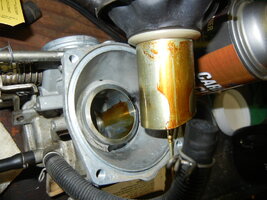Its been a long time
Doesn't know nothing.
I have just reassembled the carburettors from a 77 XS650D after cleaning and fitting new wear parts throughout. I didn't fit new diaphragms to the slides. Look as hard as I could, I can find nothing wrong with either of them. Before stripping, I noticed if I lift the slides together with my fingers, one returned slightly slower than the other. And after reassembly, it still does. I can hear the carburettor diaphragms breathing as I lift and release the slides. I can hear a definite slight clunk as the slides fully return. But they're slightly different rate of closing. I have no experience with this type of CV carburettor. Is my experience actually typical or can I expect issues when I get the bike running? Thanks.

